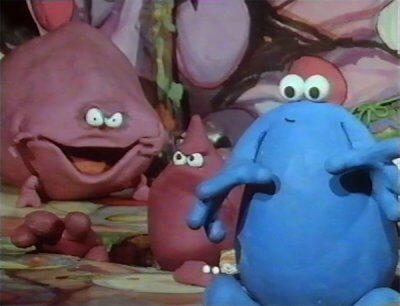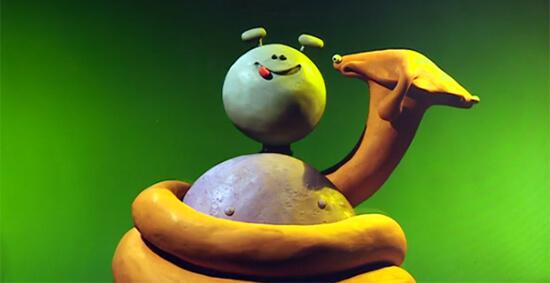Animation at Bristol Festival of Puppetry 2017
This month kicked off with the much-anticipated biennial Bristol Festival of Puppetry, a ten-day event curated by local organisation Puppet Place that, since its emergence in 2009, celebrates all forms of puppet-based art through a variety of shows, screenings, parades, meet-ups and presentations. Returning after a successful 2015 edition, stop-motion clearly remains a much respected area of this particular craft, with plenty of animated content (not to mention sold-out workshops) interwoven among the live-action performance pieces and screenings. While there was plenty for younger audiences to enjoy in the children’s programmes and an always welcome inclusion of the universally joyful Claude Barras feature My Life as a Courgette, Sunday saw perhaps the festival’s most pointedly not-for-kiddies screening in The Cabinet of Curiosities, a cross-section of animated films from central Europe that don’t pull any punches.
It’s more than a tricky task to present a balanced cultural representation of any given territory in 90 minutes, especially one spanning 60+ years, though the collection of shorts held together effectively, an enchanting range of artistic approaches shining through some of the perceivably bleak subject matter. Jiří Barta’s semi-recent piece Yuki Onna is rich in atmosphere, blending filmmaking approaches in the telling of a story that enchantingly coasts along until its fairly predictable ending. Classic shorts such as Jan Švankmajer’s Flora or Bretislav Pojar and Jiří Trnka’s O Skleničku Víc (A Drop Too Much) (a film whose beginning and middle act plods along at times, while its closing sequence of its inebriated deliveryman storming down an increasingly-disorienting highway remains a tremendously well-executed sequence) proved interesting additions, though the star of the show was the UK premiere (following a screening at Annecy earlier this year) of Jarosław Konopka’s Ucieczki (The Escape), in which a woman and child whose relationship to one another is never made explicitly clear, find one another under harrowing circumstances, navigating their way through a nightmarish environment of recent destruction. The narrative threads are loose and blurred – literally – around the edges, creating a genuine sense of disconcertment, one also contributed to by the uncertainty of its execution. At times seemingly stop-motion, the fluidity of certain sequences come off almost as though they combine elements of pixilation or CG. The end result either way is, while suitably harrowing, quite tremendous.
Monday night’s screening of Women in Puppetry and Animation was a welcome snapshot of the contemporary puppet/stop-mo filmmaking scene, one in which the percentage of women directors seems to be on the rise. Notable films many will be familiar with already included the BAFTA-winning 2016 NFTS graduation film Love Story by Anushka Kishani Naanayakkara. Another more recent NFTS offering, one that has already been making ripples if not waves on the festival circuit, is Suraya Raja’s Don’t Think of a Pink Elephant, a film whose seemingly innocuous production design belies something altogether more troubling as its subject struggles from moment to moment with violent and intrusive thoughts of self-harm (and harm to others).
Also featured were the films Boris-Noris, a charmingly chaotic tale of sibling rivalry peppered with nods to the rubberhose era by Skwigly’s own Laura-Beth Cowley, as well as Evelyn Jane Ross’s Adam, a clay animated look at the biblibal origin of mankind, assuredly worlds apart from Peter Lord’s own stop-mo short of the same name, though in its satisfying morphing sequences struck me as reminiscent of Will Vinton’s take on Mark Twain’s The Diary of Adam and Eve. Making use of a vaguely similar approach to the animation of its clay backdrop was Abend (Evening) by Izabela Plucinska, seemingly combining stop-motion with digital character animation until the attuned eye acknowledges the line art itself is also indeed clay, animated in a 2D style (using planes, presumably) rather cleverly. Another wonderfully creepy offering came in the form of Alicia Eisen’s Old Man, whose eerie character design and grim twists are accompanied by some inspired use of materials in the creation of its environment.

Terry Brain’s Trap Door
The high point of the animation-oriented festivities came with the special event Oh Globbits: A Tribute to Terry Brain, an expertly-curated celebration of the sorely-missed genius behind the classic children’s series Trap Door. Audiences who might have come into the event knowing little else of Terry’s contributions to the animation world were treated to a selection of hand-picked highlights from his involvement in the Aardman productions Creature Comforts, Shaun the Sheep, Chicken Run and Cracking Contraptions. Naturally, Trap Door itself received much deserved attention, an episode of the series presented alongside an unearthed archival documentary on its creation and production. The afternoon also saw an outpouring of remembrances from Terry’s Aardman colleagues and protégés alike, many contributing via prerecorded video segments with Trap Door production member Steve Box (who would subsequently work on the Wallace and Gromit films, his own short Stage Fright and that Spice Girls music video I confess I’d forgotten had existed) and Aardman Senior Modelmaker Jim Parkyn sharing anecdotal memories – such as why precisely Terry was known as the ‘King of Lick and Stick’ (I’ll leave it to your imaginations) – in person.

Weirdy Rhymes
With the selection kicking off with some of Terry’s earliest surviving animation footage, a fitting and quite splendid accompanying bookend proved to be the presentation of his final project Weirdy Rhymes, a decades-long endeavour that he had resumed before his untimely passing and which his son Dave has since been working to posthumously complete. Easily as charming and typically off-the-wall as the most endearingly bizarre moments of Trap Door, it’s a series that has the potential to bring in a new audience of fans and we at Skwigly certainly look forward to seeing more as it comes together.
To learn more about the work of Puppet Place visit puppetplace.org

